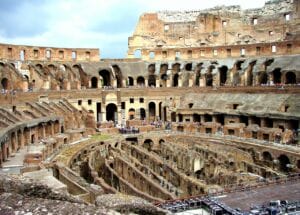Tourism is not an expense — it’s an investment.
That’s not an official slogan for advocates of Arizona’s tourism and hospitality industry, but it is a message they are working hard to imprint in the public consciousness as legislators eye further cuts to the state’s budget. As in past budget crises, funding for marketing the state’s tourism and hospitality industry is vulnerable once again.
“Too often, public officials wrap up tourism with the other cost sectors rather than looking at it as an economic engine that can help bring new spending, support new jobs, support incremental tax revenues,” says Mitch Nichols, president of the Nichols Tourism Group and treasurer of the Arizona Tourism Alliance.
Nichols says the ATA is developing an advocacy program to better explain the role tourism can play in the state’s economic recovery.
“Tourism helps Arizona’s economy on two levels. One is its role as a base industry where it can bring new spending which will support new jobs and new taxes. So it’s role as a base industry is really critical,” he says. “The other element with tourism is its role across the state. A couple of years ago when the state did an economic development plan and looked at the various clusters, they looked at tourism as the common denominator. It was the only base industry that has applications in all 15 Arizona counties.”
According to a report prepared last year by the Portland, Ore.-based economic and marketing research firm Dean Runyan Associates for the Arizona Office of Tourism, the total direct and secondary impact of the Arizona travel industry in 2008 was 310,000 jobs and $10.2 billion in earnings.
The report also found that in 2008, direct travel spending was associated with $1.4 billion in state and local tax revenues and $1.2 billion in federal tax revenues. That was the equivalent of $1,080 per household in Arizona.
In other findings:
Total direct travel spending in Arizona in 2008 was $18.5 billion, a 3.2 percent decrease over 2007.
Travel-related employment, earnings and tax receipts declined in 2008.
The collapse of the housing market and recessions in Southern California and Arizona contributed to the travel decline.
Nichols warns that while it may seem easy to cut state funding for tourism marketing, the result could be long-term damage to the industry and the derailing of a fragile economic recovery. The effects could be even more troubling as competitor states such as California hold firm despite their own economic difficulties.
“There are other states that do see the full potential of tourism,” Nichols says. “California doubled its tourism budget up to $50 million a few years ago. The state is maintaining that budget despite cuts.”
Quite a lot is at stake, according to Nichols. Citing the Dean Runyan study, Nichols says U.S. leisure and business travel spending is expected to increase 4.5 percent and 5 percent in 2010 respectively. That has the potential to create 90,000 new jobs nationwide.
Nichols says Arizona needs to step up — not back — if it wants to bring a portion of those jobs and tax revenues to the state. In order for Arizona to compete against California and Nevada, the state needs to aggressively market at both a state and regional level.
Nichols points to Flagstaff as an example of how substantial the ROI on marketing tourism can be for a community. Last spring, as the economy continued in freefall, the Flagstaff City Council acted on a recommendation by the city manager to provide a $250,000 tourism “stimulus.” The money went toward marketing Flagstaff during its traditionally slow months of May and June.
The effect on Flagstaff’s tourism industry was positive and immediate, says Heather Ainardi, director of the Flagstaff Convention & Visitors Bureau.
Ainardi says Flagstaff’s hospitality tax collections dropped almost 10 percent in March, compared to 15 percent for the state. In April, when the city began its tourism marketing push primarily in the Valley and Southern California, hospitality tax revenues fell just 1.5 percent for Flagstaff, compared 11 percent for the state. In May, Flagstaff’s hospitality tax revenues were flat and dropped 7 percent in June.
“So, although we were still down, we were doing well compared to the state. Where everybody else was seeing double-digit declines (in tax revenue), we were either flat or saw small declines. Our occupancy actually went up in May and June,” Ainardi says. “I think people look at marketing and don’t understand the return. It’s not something where you can put in a quarter and a dollar comes out. It truly is something where you put in a quarter and you see an across-the-board impact.”
According to a study the city conducted with the Arizona Office of Tourism, the tourism and hospitality industry has a $501 million annual impact on Flagstaff and creates 5,400 jobs every year.
And Ainardi and other tourism supporters in Flagstaff are on a mission to educate residents about how those tourism dollars affect their lives.
“We really promote that revenues from that tax don’t just go toward marketing,” she says. “They actually go toward parks and recreation, they go toward public beautification, economic development and the arts and sciences. In Flagstaff, we have a system developed where we can help people understand that the 47 miles of urban trails that they utilize on a daily basis are built and maintained through tourism dollars.”
As a member of ATA, the Flagstaff CVB has worked closely with the group in its efforts to save funding for the Arizona Office of Tourism. Ainardi says her organization plans to continue its partnership with ATA to further the alliance’s advocacy mission.
“Tourism is amazingly important and it’s been one of the traditional backbones of some of our economies,” she says. “It’s not everyone’s favorite industry, but it is one that continues to grow and benefit our communities.”
www.nicholstourismgrp.com | www.flagstaffarizona.org



